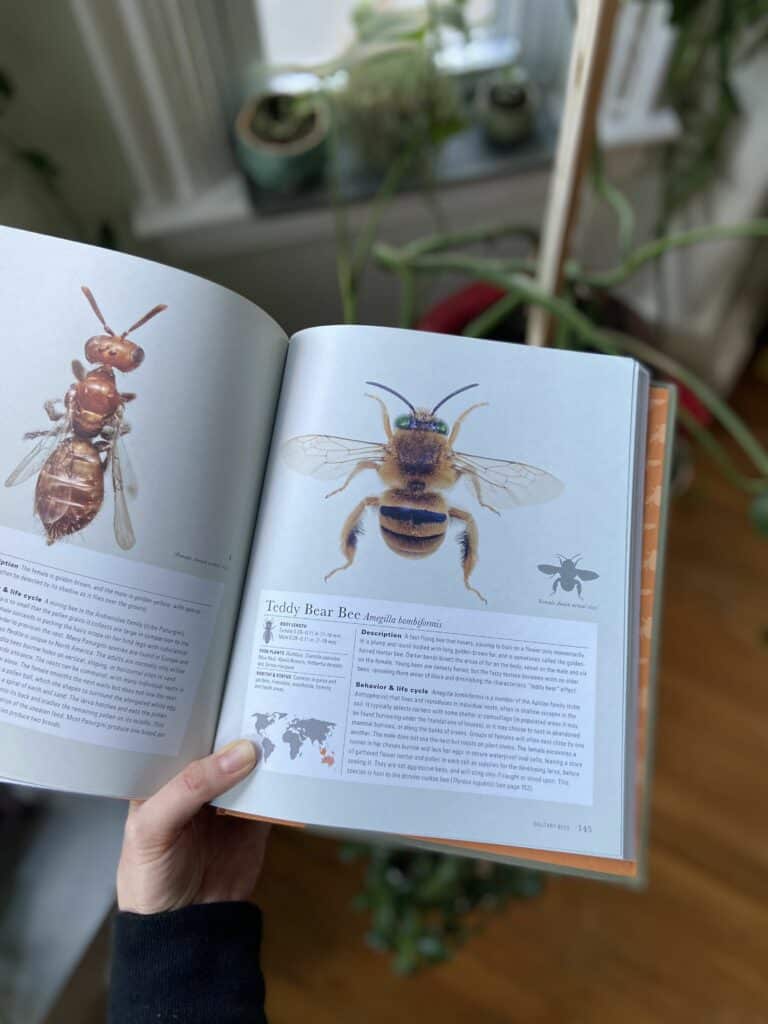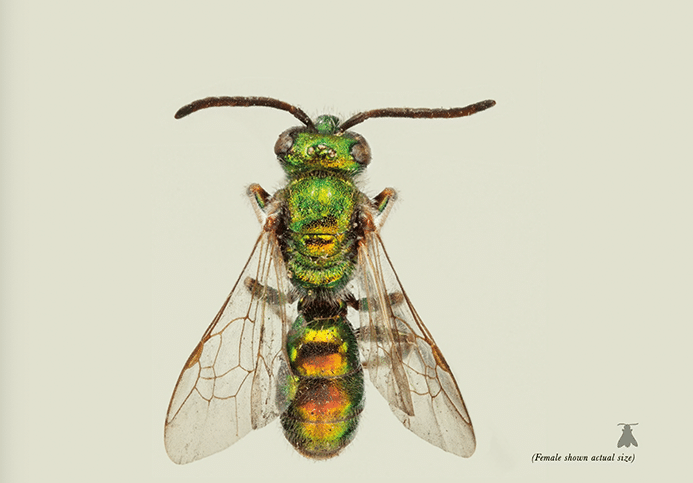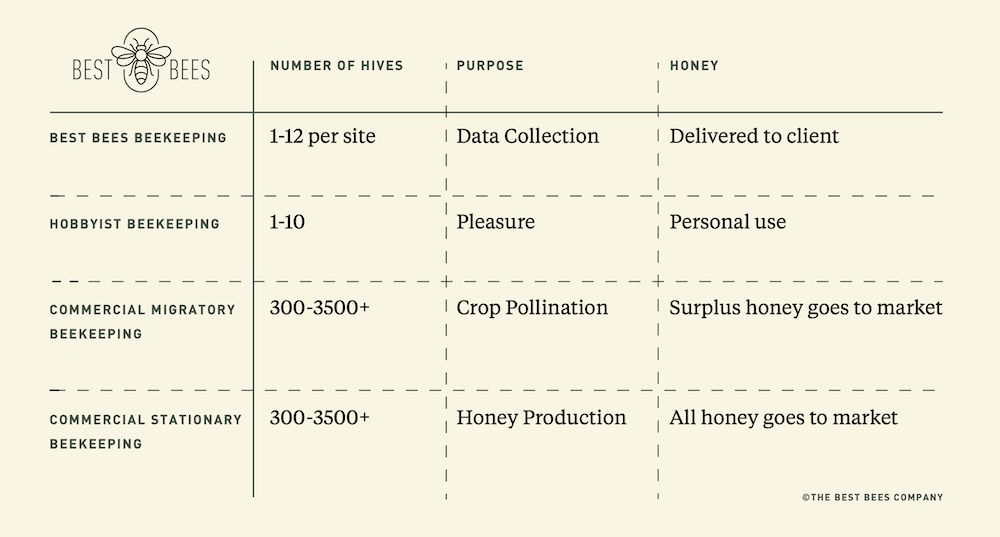Bees come in all shapes, sizes, and colors. According to The Bee: A Natural History written by our chief and resident bee expert, Noah Wilson-Rich, “Earth is home to more than 20,000 bee species, from fluorescent-colored orchid bees and sweet bees to flower-besting squash bees. Bees are a diverse species that plays an integral role in the life of the planet.
–– Interested to know how the bees are doing? Download our State of the Honey Bee Report now ––
Out of these 20,000 different bees, roughly 4,000 species of bees are native to America. The USGS Native Bee Inventory and Monitoring Program designs and develops large and small scale surveys for native bees. For more information on native bee species, visit the USGS Bee Inventory and Monitor Lab with over 4,000 hi-resolution photos.
Continue reading to learn more about the world’s smallest, largest, and weirdest bee species below.
Smallest Bee Species – Perdita Minima Bee
If the Perdita Minima bee is not the smallest bee in the world, it is definitely the smallest bee in North America. The U.S. Forest Service classifies this tiny bee as a solitary bee, meaning they are not as social as honey bees. A little less than two millimeters long, this bee species can be found in extremely small nests in the sandy soil found in the desert.
Don’t let its size fool you though. This petite bee is very capable of packing large loads of pollen on its hairy legs.
Largest Bee Species- Wallace’s Giant Bee (Megachile Pluto)
Wallace’s Giant Bee is too big to go unnoticed, but has remained elusive since the early 1980’s. However, the Museum of Natural History in London reports that a group of “researchers from Princeton University, the University of Sydney, Central Queensland University, Saint Mary’s University in Canada and local guides set out to locate the insect” in a small Indonesian rainforest. Almost the size of an adult’s thumb and four times the size of the honey bee, the wildlife photographer Clay Bolt says, it was a breathtaking sight.
British entomologist Alfred Russel Wallace, who also co-discovered Darwin’s theory of evolution, discovered this bee in 1859. This giant bee can be found nesting in active termite mounds found in trees. Deforestation currently threatens the life of this rare species of bee and is currently a part of Global Wildlife Conservation’s ‘“Search for Lost Species” initiative.
Weirdest and Coolest Bee Species
This list of bees wouldn’t be considered the coolest if it didn’t include the Anthophora pueblo, Domino Cuckoo Bee (Thyreus lugubris), or the Amegilla bombiformis, aptly named as the Teddy Bear bee. Each of these species highlights what the future holds for bees.
Anthophora pueblo
This new species of bee is considered uncommon and for good reason too. The Anthophora pueblo drills their nests out of rock. These bees, like their human counterparts, enjoy elemental style living. Using water to excavate sandstone for their nests, these bees show a fair amount of wear-and-tear on the body. However, because microbes are unable to invade these particular nests, this bee species is able to “help to control parasite build-up across years.”
Domino Cuckoo Bee (Thyreus lugubris)
The Domino Cuckoo bee belongs to the Apidae family. This bee species can be found with either white or shockingly blue spots. According to the Aussie Bee, “They behave like cuckoo birds– laying their eggs in the nests of other bees.” A difference between cuckoo bees and other species is that the female cuckoo bees lack pollen collectors and don’t construct their nests.
If you’re looking to spot one of these cuckoo bees, these beautiful creatures can be found in Australia.
Teddy Bear Bee (Amegilla bombiformis)
The Teddy Bear Bee is the world’s cutest bee. And no– it’s not just the name, but it is also as cute and cuddly as it looks. Thinking of snuggling up with one of these bees, you’re in for a treat especially since the male bees don’t sting. This bee also goes by the name golden haired mortar bee and is native to Australia.
Quickly mistaken for a bumblebee, the Amegilla bombiformis is a carpenter bee. This means that they’re great pollinators. You can now add flying teddy bears to the list of things you thought could never happen.

Bees continue to evolve and show examples of specialization. The more we learn about the bees, the better off our planet will be. Are there any additional cool species of bees we didn’t mention? Feel free to send us a Tweet at @BestBees with some of your favorites.







